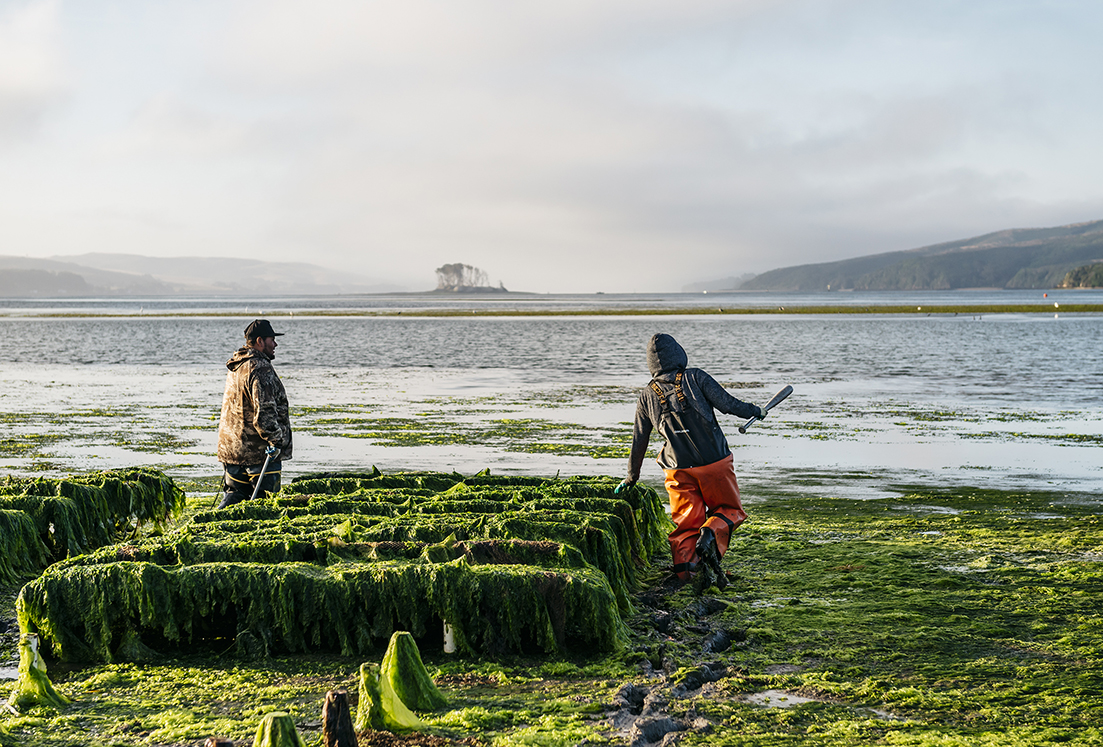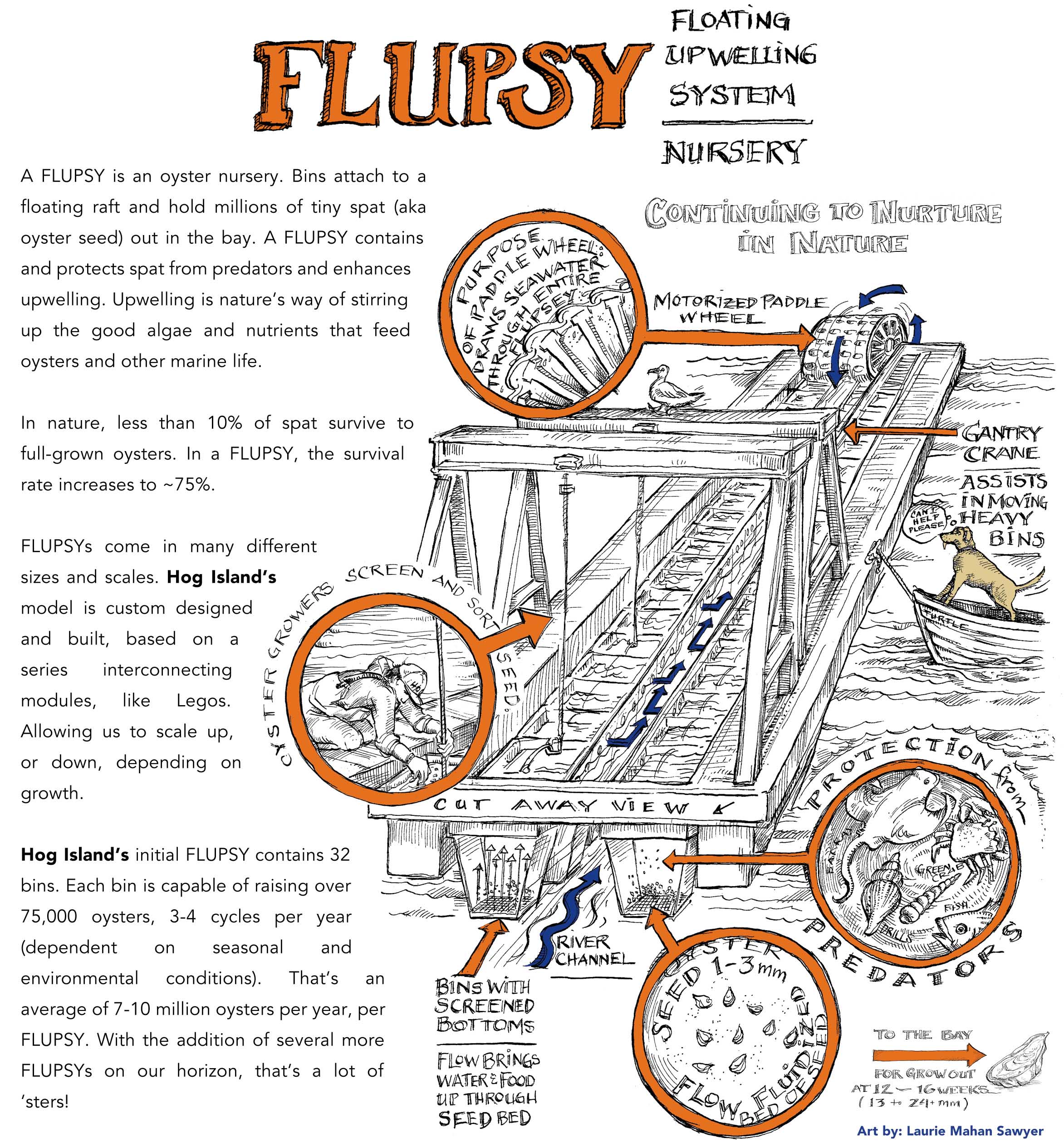Tomales Bay
Tomales Bay, on the coast of Northern California, is our home where we grow, harvest, shuck and share great oysters.
“The flavor of an oyster is one of the purest tastes of place.” — John Finger, co-founder, Hog Island Oyster Co.
Few foods carry the flavor of “place” quite like an oyster. Tomales Bay has the cool, clean water rich in plankton that oysters feed on to grow plump and sweet, and the flavor of the bay is evident in every delicious mouthful. Oyster lovers call this merroir; we call it delicious.


Humboldt Bay
Humboldt Bay in Northern California is a rich and diverse marine ecosystem with a long tradition of producing great oysters. We start and grow our Pacific and Kumamoto oysters from scratch at our Humboldt Bay hatchery and nursery, in several calm basins protected from the Pacific Ocean by the Somoa Peninsula—the perfect location for raising oyster seed.
We are proud to own and operate California’s first permitted oyster shellfish hatchery in Humboldt Bay, CA. In our hatchery, we cultivate oysters from larvae stage to single set spat (spat being tiny oyster seed). Raising seed in a hatchery setting protects young oysters from predators and environmental stresses, increasing their survival success.
Our Humboldt Bay Nursery
Hog Island Oyster’s nursery in Humboldt Bay is a custom-designed, state of the art FLUPSY (Floating Upwelling System). When spat reach approximately 1-3 mm in size, they are transferred to our nursery, FLUPSY. A FLUPSY contains and protects young oysters and enhances the natural upwelling of nutrients and phytoplankton in the ecosystem that oysters feed on. Our nursery team tend to the oysters daily to monitor their health, condition, and growth.
Producing our own oyster seed means that we can continue to guarantee the highest quality oysters from the outset and meet our own strict standards of environmental care and consideration. Not only does our hatchery create millions of sustainable oyster seed, but it also creates sustainable, living wage jobs and careers in coastal communities. This is one of our greatest investments–farming for future generations.
